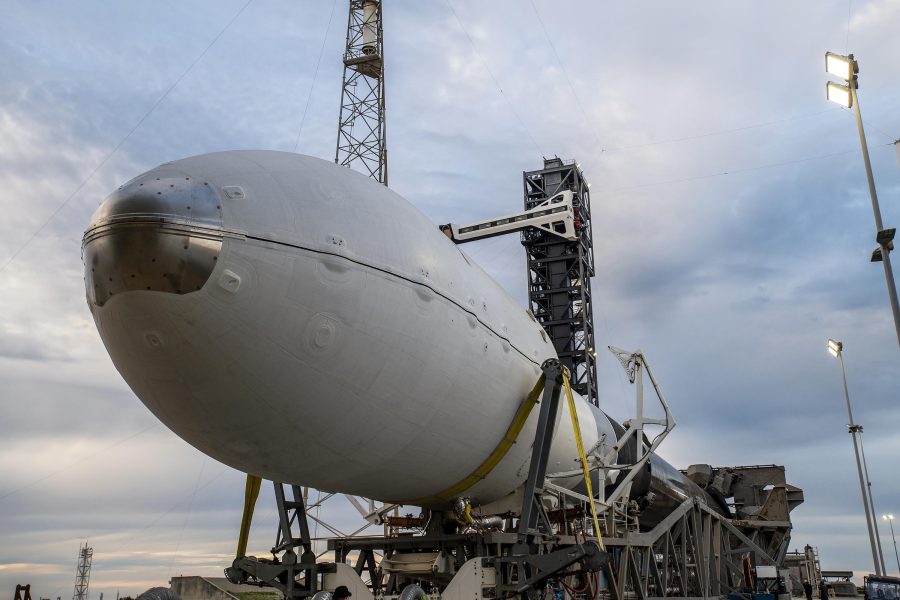The first batch of the Space Development Agency’s Tranche 0 spacecraft are all in orbit, a total of 27 satellites launched into low-Earth orbit within 42 months after the contract award.
The last four of those missile warning/missile tracking satellites launched successfully into Space, along with two Missile Defense Agency satelliotes, from Cape Canaveral Space Force Station, Fla., on a SpaceX Falcon 9 rocket.
Of the 27 satellites in Tranche 0, 19 perform data transport and communications, while eight do missile warning. One additional satellite remains on the ground as a testbed.
SDA and MDA worked together on the launch, because the MDA’s two Hypersonic and Ballistic Tracking Space Sensor satellites are closely related to SDA’s “Tracking Layer” for missile warning and tracking.
“Launching our Tracking satellites into the same orbit with the MDA … satellites is a win for both agencies,” SDA director Derek Tournier said in a statement. “We’ll be able to look at test targets from the same orbit at the same time, so that we can see how the two sensors work together.
Sensors based on the MDA satellite design will be incorporated into later tranches of the SDA constellation, Tournear added.
Tranche 0 was designed to be a “warfighter immersion” tranche, giving service members the opportunity to work with the systems, understand their capabilities, and to develop operational concepts for their use.
SDA has already announced it has connected with the satellites using the Link 16 data network, a first in space, and the first missile warning satellites launched in April 2023 have captured initial imagery.
Now senior SDA officials say they’ll look to get the satellites involved in real-world Pentagon exercises to show off what they can do.
“We’re looking for opportunities to engage in demonstrations today with the capabilities that we have available,” a senior SDA official said. “It won’t be a firm deadline where we say, now the satellites can be turned over for demonstrations. We’ll participate in any warfighter activities we can at this point moving forward.”
For the Tracking satellites in particular, “it’s just a matter of the launch windows coinciding with our satellites to be able to image those,” the official said. “So we are actively working with all of our partners to be able to schedule those demos, and you’ll see those over the coming months here.”
Tranche 0 survived multiple launches en route to its full deployment, and at least one data transport satellite experienced problems due to a defect. But the overall program has been deemed a success, proving the concept for rapidly awarding contracts, acquiring satellites, and launching them on a much faster timeline than traditional space acquisition programs.
Leaders say the PWSA is also desperately needed to boost the Space Force’s resilience on orbit. By placing hundreds of satellites in low-Earth orbit, the thinking goes, the U.S. can withstand the loss of a few satellites and keep its needed space capabilities—thus discouraging adversaries from trying to destroy any of them in the first place.
The PWSA’s scale will expand dramatically in Tranche 1, set to start launching in September of this year. SDA has awarded contracts for 126 Transport Layer satellites, 35 Tracking satellites, and 12 tactical demonstration satellites. Tranche 1 will be the first “operational” batch of satellites SDA launches.

